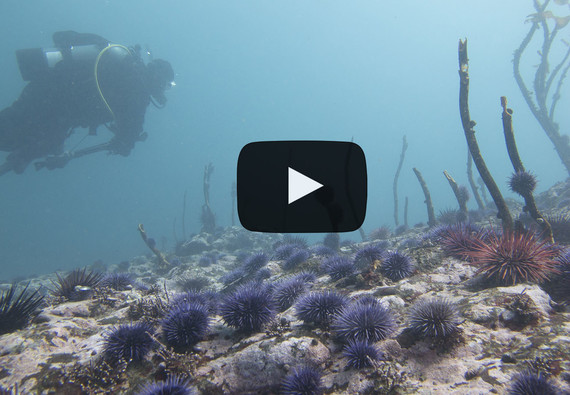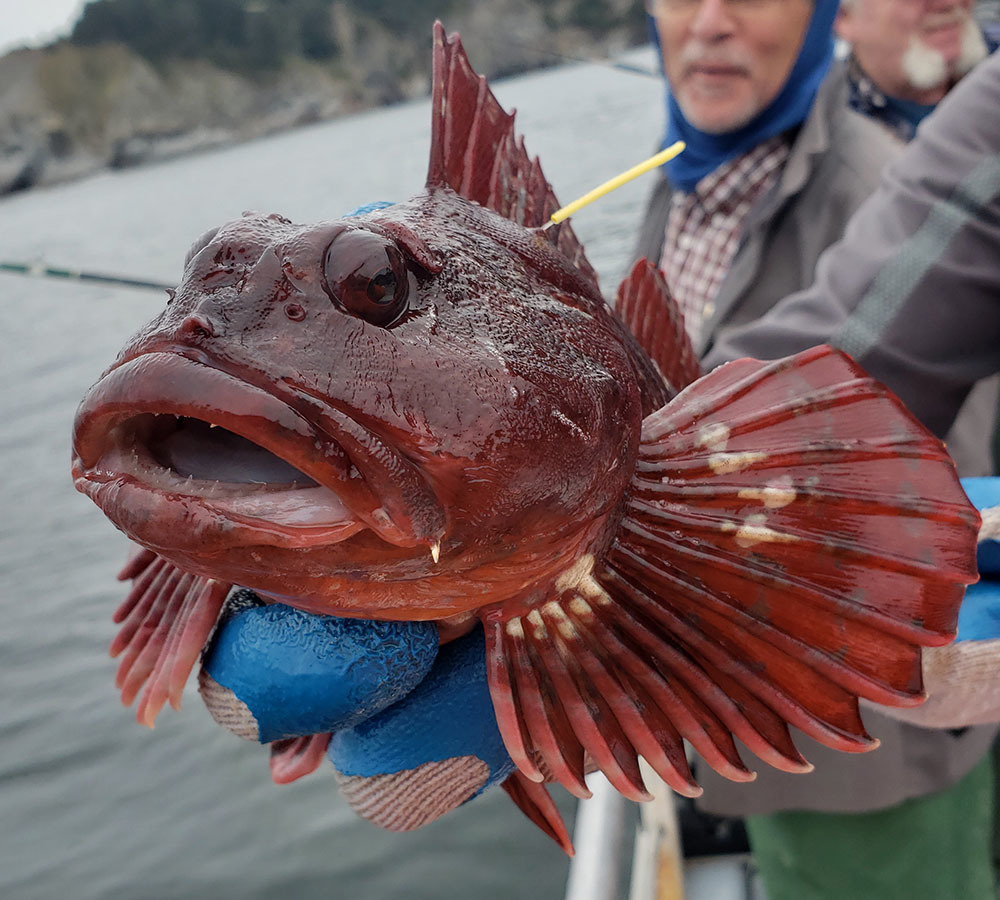A Prickly Problem with Sea Urchins
A former kelp bed filled with a large number of purple sea urchins seen off of Port Orford, near Redfish Rocks Marine Reserve. Photo by Scott Groth.
Beneath the waves, once towering kelp beds are collapsing from an unprecedented perfect storm that has been brewing below the surface. First, a massive epidemic wiped out sea stars, then a marine heatwave and El Niño, and now an explosion of sea urchins. This means bad news for kelp. The combination of abnormally warm water and a huge number of sea urchins have taken a toll on once healthy kelp beds.
Oregon has seen a 10,000% increase in sea urchin populations in recent years. Long term monitoring programs, such as with ODFW's Marine Reserves Program, provide researchers valuable information to determine the differences between seasonal fluctuations versus more substantial, longer-lasting changes.
 The recent explosion of purple sea urchins, and their range expansion into deeper water, poses a serious question: What’s causing these changes? Marine scientists have more than just a hunch. And they believe that the problem is more complex than simply sea urchins eating kelp. Click the video above to learn more. Photo by Scott Groth.
 Check out this very red Cabezon. It was tagged, then released, at Cape Falcon Marine Reserve a couple weeks ago. Tagging fish in the marine reserves gives us information about fish movement, growth, and post-release survival. This year, we tagged fish at Redfish Rocks and Cape Falcon. Next year we will be tagging fish at Cascade Head and Cape Perpetua. Read more about tagged fish in this story. Photo by Kat Maloney.
 |
|
We completed 3 days of hook and line surveys at Cape Falcon which included tagging over 40 fish in the marine reserve. Tagging fish helps us learn about fish movement, growth and post-release survival. We also collected Black Rockfish from outside the reserve for an OSU study on microplastics. |
 |
|
We completed 24 lander drops at Redfish Rocks Marine Reserve, and 5 lander drops at Otter Rock Marine Reserve.
|
 |
|
We completed 14 SCUBA surveys at Redfish Rocks. We also collected some samples of algae at Otter Rock as part of an algal research project being conducted by Dr. Gayle Hansen. |
 |
|
We retrieved our oceanographic equipment at Cascade Head and oceanographic sensors from Cape Falcon. |
Updates from Collaborators
 |
|
All juvenile fish surveys at Redfish Rocks and Otter Rock have been wrapped up for the year and all SMURF equipment has been retrieved out of the water.
|
Explore More Marine Reserves News
|